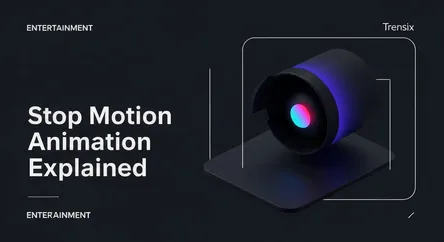Entertainment
Stop Motion Animation Explained

Discover the magic of stop motion animation. Learn what this classic filmmaking technique is, why it's trending, and how it captivates audiences.
What is it?
Stop motion is an animated filmmaking technique where objects are physically manipulated in small increments between individually photographed frames. When the sequence of frames is played back rapidly, it creates the illusion of movement. This painstaking process can use various materials, including clay (claymation), puppets, cut-out paper, or even household objects. Each frame is a carefully composed photograph, and it can take 12 to 24 frames to create just one second of film. Iconic examples include classics like 'Wallace and Gromit' and modern masterpieces from studios like Laika, such as 'Coraline' and 'Kubo and the Two Strings'.
Why is it trending?
In an era dominated by slick computer-generated imagery (CGI), stop motion offers a tangible, handcrafted charm that resonates with audiences. Recent critically acclaimed films, like Guillermo del Toro's Oscar-winning 'Pinocchio', have brought the art form back into the spotlight, showcasing its emotional depth and visual artistry. Furthermore, its unique aesthetic makes it popular on social media platforms like TikTok and Instagram, where creators use it for short, eye-catching videos, making the technique more accessible and visible than ever before.
How does it affect people?
Stop motion evokes a powerful sense of nostalgia and wonder. The slight imperfections and tangible textures of the models give the films a unique warmth and personality that purely digital animation can sometimes lack. It highlights the immense skill and patience of the animators, fostering a deep appreciation for the craft of filmmaking. For viewers, this creates a more intimate and magical experience, connecting them directly to the artist's hand and reminding them of the incredible creativity possible through traditional, hands-on techniques.